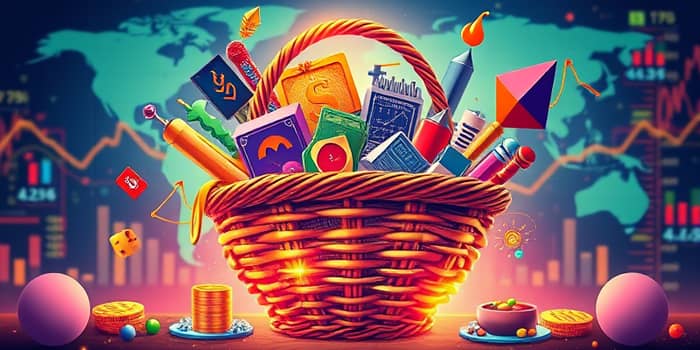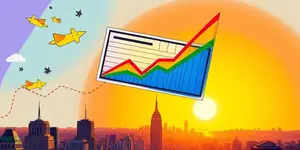Exchange-Traded Funds, or ETFs, have revolutionized the way individuals and institutions invest in financial markets. By combining the diversification benefits of mutual funds with the liquidity of stocks, ETFs offer an unmatched blend of convenience, cost efficiency, and transparency.
In this comprehensive guide, we explore the origins, growth, advantages, and practical strategies for harnessing the power of ETFs.
Understanding the ETF Landscape
An ETF is essentially a basket of securities traded like a single stock. First introduced in 1993, ETFs have grown from niche products to cornerstone holdings in portfolios worldwide. They allow investors to gain exposure to a wide variety of asset classes, sectors, and geographic regions without having to select individual securities.
At their core, ETFs track an underlying index, sector, or theme, replicating performance through a portfolio of holdings that investors can buy or sell throughout the trading day.
Why ETFs Have Skyrocketed in Popularity
The global ETF industry has attracted over $8 trillion in assets as of late 2023, driven by both passive and actively managed funds. Key factors behind this surge include:
Active ETFs, which are professionally managed to outperform benchmarks, accounted for 27% of ETF flows globally in early 2025, signaling a shift toward more dynamic portfolio solutions.
Exploring Different ETF Categories
ETFs have evolved to cover virtually every corner of the financial universe. Major categories include:
- Broad Market ETFs tracking indices like the S&P 500 or Nasdaq Composite.
- Thematic or Targeted ETFs focusing on sectors such as technology, healthcare, or emerging markets.
- Active ETFs managed to beat benchmark returns through tactical security selection.
- Commodity, Bond, and Currency ETFs offering exposure to gold, oil, fixed income, and foreign exchange.
Investors can align these products with long-term goals, tactical plays, or specialized themes such as environmental, social, and governance (ESG) investing.
The Mechanics Behind ETFs
One of the cornerstones of ETF functionality is the creation and redemption mechanism. Authorized participants exchange baskets of securities for ETF shares (creation) or surrender ETF shares for underlying assets (redemption). This process helps ETFs maintain liquidity and trade close to their net asset value (NAV).
Unlike mutual funds priced once per day, ETFs are priced continuously during market hours. Investors benefit from immediate settlement, intraday trading, and transparent pricing that reacts to global events in real time.
Comparing ETFs, Mutual Funds, and Stocks
Smart Strategies for ETF Investors
ETFs can serve as foundational building blocks in any portfolio. Consider these tactics:
- Core-Satellite Allocation: Use broad market ETFs as core holdings, complemented by targeted or active ETFs in satellite positions.
- Thematic Rotation: Shift allocations to thematic ETFs—green energy, artificial intelligence—based on macro trends.
- Income Generation: Incorporate bond or dividend-focused ETFs for consistent yield and capital preservation.
Regardless of approach, maintain discipline through regular rebalancing and cost tracking to avoid drift and hidden fees.
Who Uses ETFs and How?
ETFs are embraced by a diverse array of market participants:
- Individual Investors seeking simple, low-cost entry to equities, fixed income, or alternative assets.
- Institutional Managers employing ETFs for tactical asset allocation, hedging, and liquidity management.
- Financial Advisors building client portfolios with transparent, easy-to-trade components.
With no minimum investment in many cases and zero-commission trading, ETFs democratize market access and level the playing field for investors of all sizes.
Key Considerations and Potential Drawbacks
While ETFs offer numerous benefits, investors should remain aware of:
- Bid-Ask Spreads: Niche or low-volume ETFs may have wider spreads, increasing trading costs.
- Tracking Error: Performance may diverge slightly from the target index due to fees and portfolio replication methods.
- Market Risks: ETFs are subject to the same volatility and downturns as underlying assets.
Due diligence on liquidity, structure, and expense ratios is essential before committing capital.
Ultimately, ETFs represent a powerful tool that blends flexibility, affordability, and transparency. By understanding their structure, varieties, and strategic applications, investors can harness ETFs to build resilient portfolios aligned with long-term objectives.
Whether you are novices seeking diversified market exposure at low cost or seasoned professionals optimizing tactical allocations, ETFs deliver a robust framework for modern portfolio management. Embrace the ETF revolution and enjoy simplified market access, anytime, anywhere.
References
- https://www.ssga.com/us/en/individual/resources/education/etf-benefits-for-investors
- https://dayhagan.com/benefits-of-etfs
- https://www.schwab.com/etfs/benefits
- https://www.aberdeeninvestments.com/en-lu/institutional/investment-solutions/thematic-investing/key-benefits-of-etfs
- https://www.fidelity.com/learning-center/smart-money/benefits-of-etfs
- https://am.jpmorgan.com/se/en/asset-management/per/funds/etfs/benefits-active-etfs/
- https://investor.vanguard.com/investment-products/etfs
- https://www.ssga.com/sg/en/institutional/insights/education/benefits-and-uses-of-etfs










